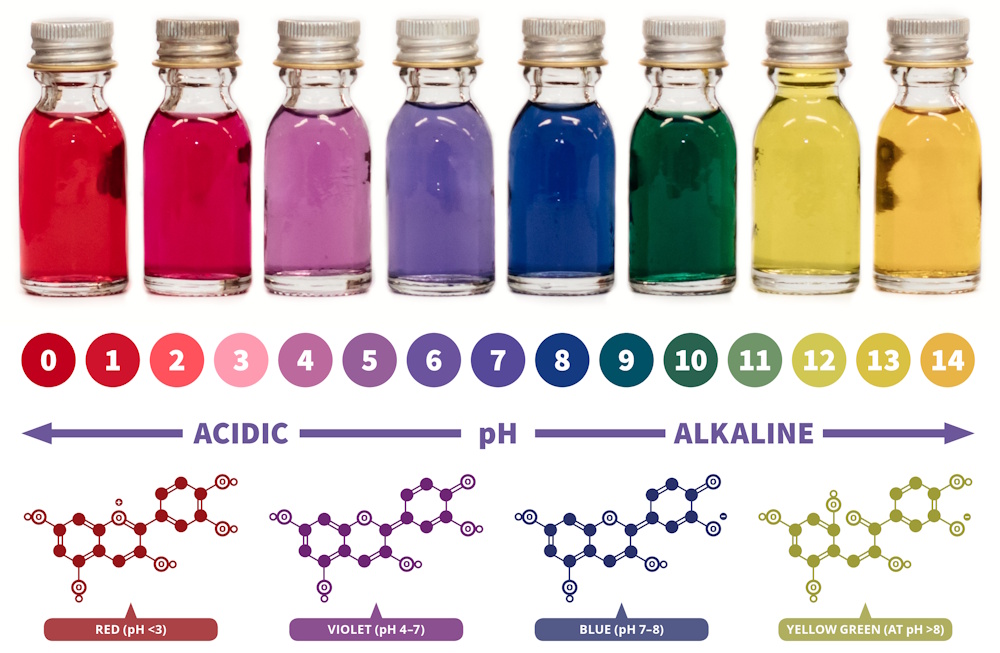Have you ever noticed how a splash of lemon juice can change the color of certain foods? Or how turmeric stains become red when you add soap water? These color-changing reactions are not just kitchen surprises – they are tiny chemistry experiments!
In this activity, you will explore how natural materials like red cabbage, hibiscus, beetroot, and turmeric can reveal whether a substance is an acid or a base.
Science Involved
Natural indicators are plant-based substances that change color when mixed with acidic or basic solutions. The color change happens because these plants contain pigments that react differently depending on the chemical nature of the solution. For example:
-
Red cabbage turns red in acids and green or blue in bases.
-
Hibiscus shows bright red in acids and green in bases.
-
Beetroot appears pinkish-red in acids and yellowish in bases.
-
Turmeric remains unchanged in acids but turns red in bases.
These natural pigments – like anthocyanins in cabbage and hibiscus, or curcumin in turmeric – act much like laboratory indicators, but they’re safer, easily available, and make chemistry both colorful and fun!
Activity
Requirements
Red cabbage leaves, hibiscus petals, beetroot, turmeric powder, mortar and pestle, strainer or filter paper, small bowls, warm water or ethanol, common basic substances (e.g., baking soda solution) and sodium hydroxide solution and neutral substances (e.g., distilled water, ethyl alcohol).
Safety Instructions
You will be working with acids and bases that can irritate your skin or eyes. Always wear safety goggles and a lab coat. Handle acids and bases carefully and never taste or touch them. If you spill any chemical, wash the area immediately with plenty of water and inform your teacher or parents.
Getting Ready
Follow the steps given below to extract the indicator solution for the natural indicator that you are using.
Red Cabbage Indicator
-
Chop a few red cabbage leaves and crush them using a mortar and pestle.
-
Add warm water to the crushed leaves and let it sit for 10 minutes.
-
Strain the mixture to collect the purple-colored liquid.
Hibiscus Indicator
-
Crush fresh hibiscus petals in a mortar and pestle.
-
Add a small amount of warm water or ethanol.
-
Strain the solution to get a red extract.
Beetroot Indicator
-
Peel and chop a beetroot.
-
Blend or crush the pieces and strain the juice using a muslin cloth.
Turmeric Indicator
-
Mix 1-2 teaspoons of turmeric powder with water or ethanol to form a paste.
-
Use the paste directly or dissolve it in warm water to create a solution.
Procedure
-
Label small bowls or test tubes for the substances to be tested.
-
Add a few drops of each natural indicator to separate test solutions.
-
Observe and record color changes.
Observations
| Test Solution | Red Cabbage | Hibiscus | Beet Root | Turmeric |
|---|---|---|---|---|
| Hydrochloric acid | ||||
| Vinegar (acetic acid) | ||||
| Lemon juice | ||||
| Soda water or clear carbonated drink | ||||
| Baking soda solution | ||||
| Sodium hydroxide solution | ||||
| Distilled water |
Reflect and Discuss
-
What characteristics of plants or substances might make them good natural indicators?
-
Why do you think certain plant extracts change color in acids and bases while others do not?
-
Can you think of a way to make a natural indicator more stable or long-lasting for repeated use?

